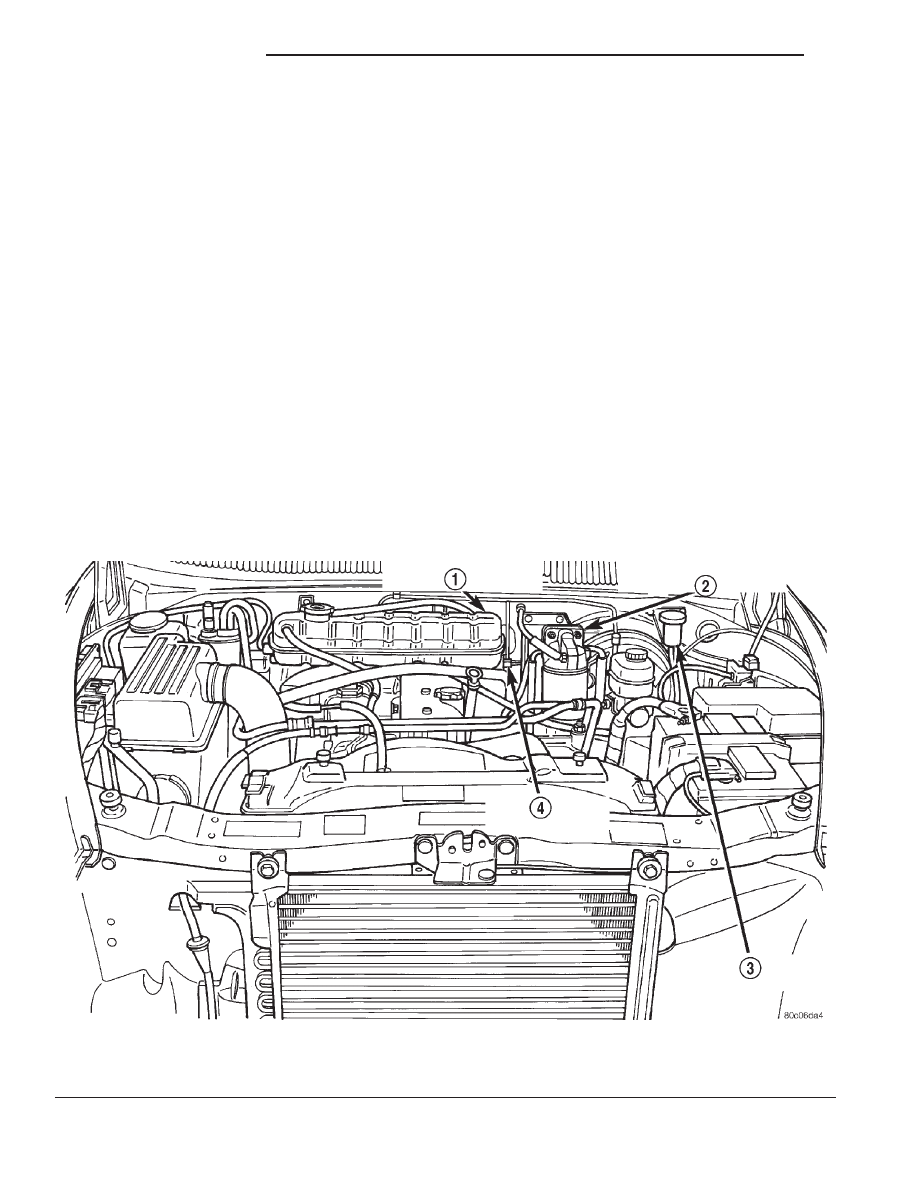Dodge Dakota (R1). Manual - part 267

STANDARD PROCEDURE - COOLANT
REPLACEMENT
It is recommended that the cooling system be
drained and flushed at 84,000 kilometers (52,500
miles), or 3 years, whichever occurs first. Then every
two years, or 48,000 kilometers (30,000 miles),
whichever occurs first.
STANDARD PROCEDURE - COOLANT LEVEL
CHECK
The coolant level is checked and adjusted at the
pressurized coolant tank (Fig. 7). The tank is located
at the right-rear side of the engine compartment and
is mounted as the highest point of the cooling sys-
tem. This will allow any air or vapor exceeding the
pressure/vent cap rating to escape through the cap.
The coolant tank is equipped with a threaded-on
pressure/vent cap (Refer to 7 - COOLING/ENGINE/
RADIATOR PRESSURE CAP - DESCRIPTION).
A coolant reserve/overflow system with a separate
tank is not used with the 2.5L diesel engine.
(1) Add coolant into the coolant tank up to the
COLD mark. If possible, only add coolant when
the engine is cold. Coolant level in a warm
engine will be higher in the tank due to ther-
mal expansion.
(2) After the engine has been operated through a
few heat-up and cool-down cycles, recheck the coolant
level in the tank.
FAN BLADE
REMOVAL
Accessory drive belt removal is not necessary for
fan blade or viscous fan drive removal.
(1) Disconnect negative battery cable from battery.
(2) The thermal viscous fan drive/fan blade assem-
bly is attached (threaded) to the fan pulley shaft
(Fig. 8). Remove fan blade/viscous fan drive assembly
from fan pulley by turning mounting nut counter-
clockwise as viewed from front. Threads on viscous
fan drive are RIGHT HAND. Snap-On
t 36 MM Fan
Wrenches (number SP346) can be used to turn the
mounting nut and to hold the fan pulley from rotat-
ing.
Fig. 7 Coolant Tank and Pressure/Vent Cap
1 - COOLANT RESERVE/OVERFLOW TANK
2 - FUEL HEATER/WATER SEPARATOR
3 - HYDRAULIC CLUTCH FLUID RESERVOIR
4 - LOW COOLANT LEVEL SWITCH
7a - 14
2.5L VM DIESEL
R1
COOLANT (Continued)